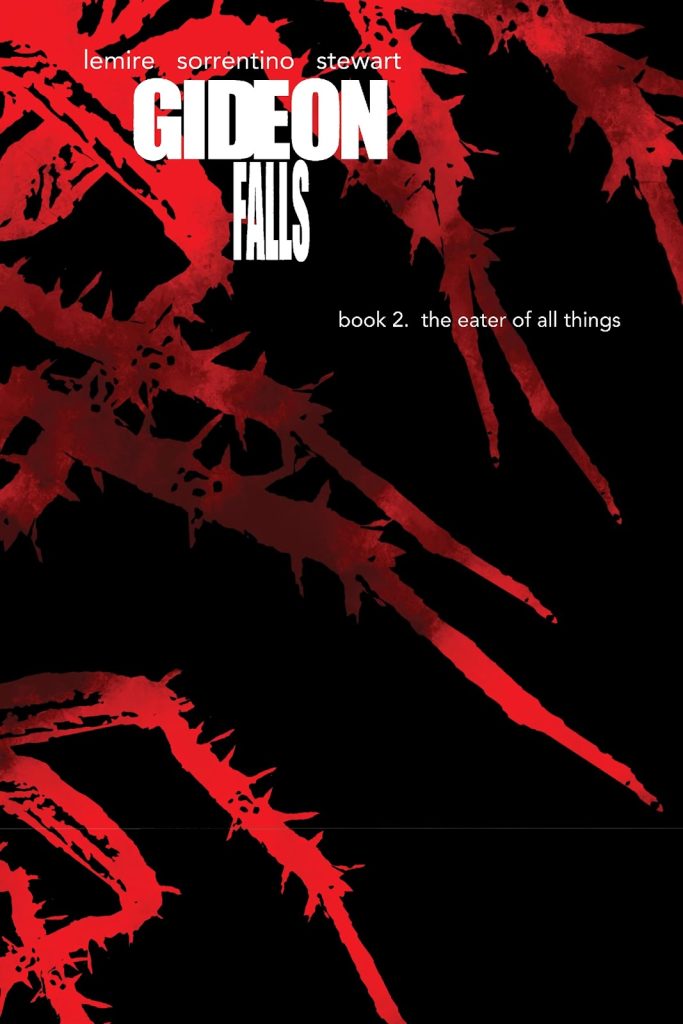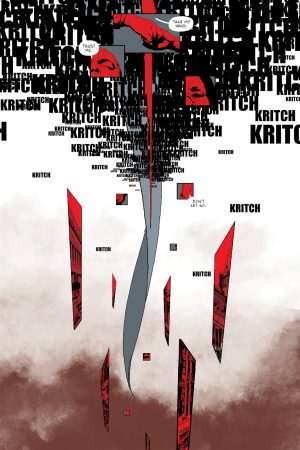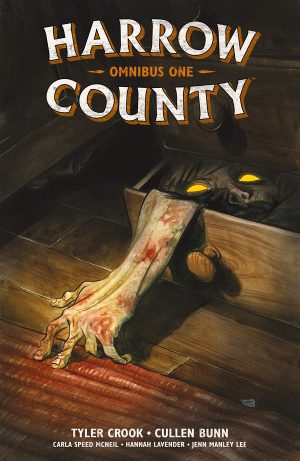Review by Karl Verhoven
Much of Gideon Falls to date has built up the cast and involved them in the mysteries of the horrific and inexplicable, both in the present day and in the past. However, in the final stages of The Legend of the Black Barn Jeff Lemire began the revelations, and these continue over the opening chapters here. It’s not complete disclosure, as some things are unknowable, but it shifts the emphasis from wondering about just what the hell’s happening to what can possibly be done.
Lemire toyed with the preconceptions of readers over the previous volume. Until it was revealed not to be the case, readers would have presumed everything seen existed on the same world. It doesn’t. Gideon Falls deals with two worlds, and here more, and the horrors dwelling in the cracks between them. People who’ve carried the story to date have counterparts and there’s an admirable complexity to their working together.
The overall presentation is very cinematic, Andrea Sorrentino’s art lingering in places and on people to capture reactions and aftermath. He straddles a very fine line, importing fine art and design techniques such as on the sample art, and sometimes abstractions, yet never letting readers down in showing what needs to be shown. As this is the release following the build-up, a savage grinning evil is more prominent this time. Sorrentino’s depiction of it is terrifying, and it manifests in different arenas, so having restricted the art to the single genre for so long, there’s a visual relish bursting free of constraints.
In including genre variations of Gideon Falls, the town, Lemire takes a prolonged wild swerve at odds with with what was previously a progression. It becomes a succession of new worlds as the main cast are separated into individual hells, each chased by the grinning man. The worlds are thoughtfully conceived, although have their origins in homage, and it’s a method of exploring alternative forms of horror, but there’s a hint of repetition about them as each protagonist faces the same threat in different surroundings.
“For some reason we can never know, the heart of it all was a place called Gideon Falls” is a fair fudge, but because Gideon Falls is otherwise so well conceived it can be overlooked. Once Lemire gets back on track multiple realities begin collapsing into each other, so reuniting the surviving cast. What had previously been a slow release now rockets to a conclusion that some might consider too rapid after the build-up, but it’s obviously planned that way.
There’s a pleasing circular nature to Gideon Falls, as the ending is contingent on what was destroyed being reconstructed, and something else being destroyed. Redemption and vindication of faith play their part, and the tension survives until the very end. The alternate realities provide a saggy middle section, so overall this lacks the drive of the first volume, and Lemire can’t resist avoiding complete closure in the final panel, but so much is so good that you’ll be mulling over what you’ve read for a long time.





